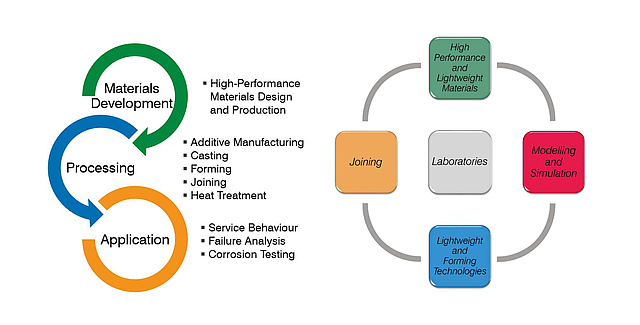Fields of Research

Research at the Institute of Materials Science, Joining and Forming is carried out by four main groups, supported by the laboratories and workshops. The group leader and the deputy ensure that work is done efficiently by organising different tasks, improving the information flow within the team and representing the working group externally. These internal and external networking activities enable an excellent scientific and technological output.
related links
